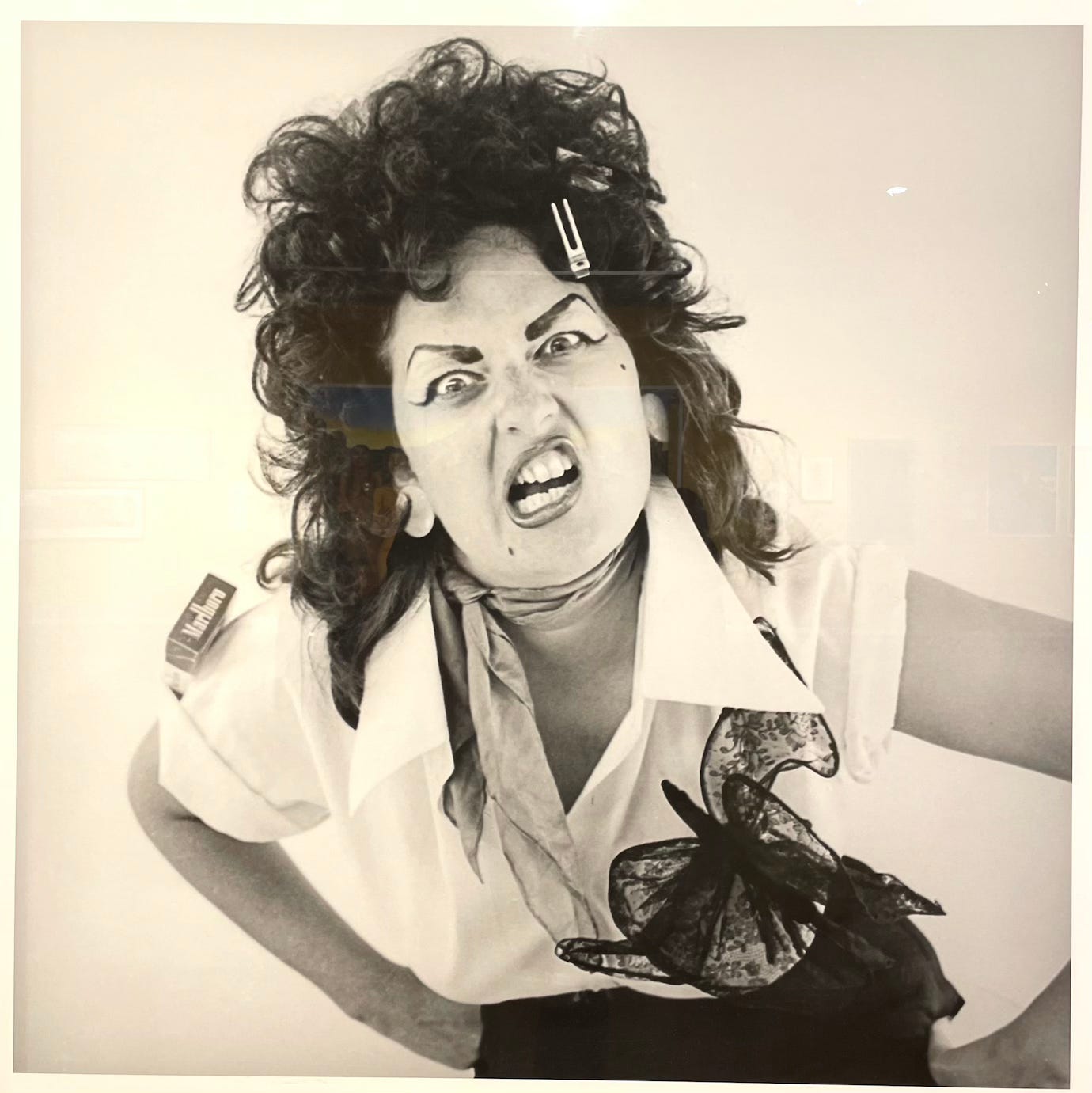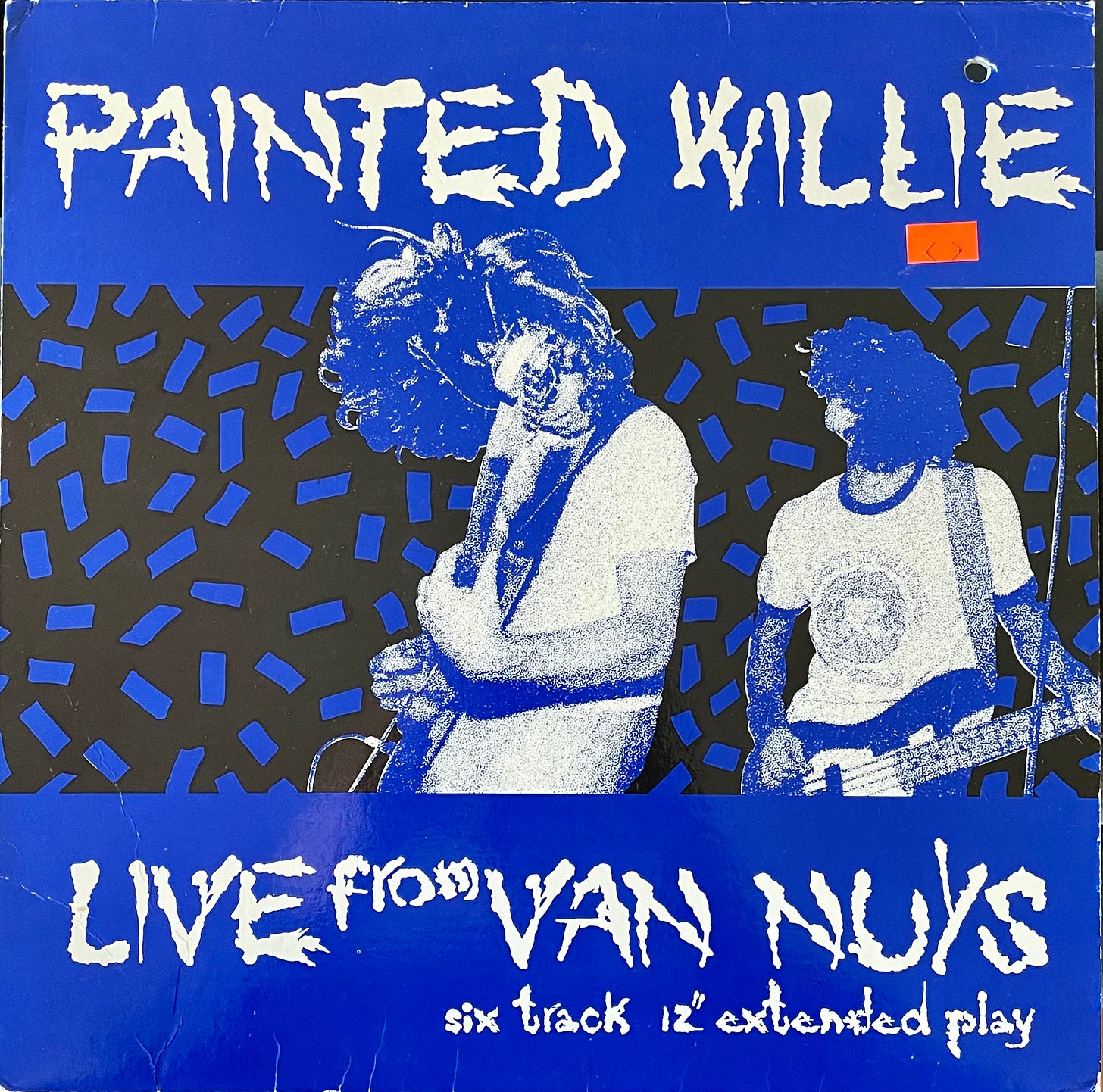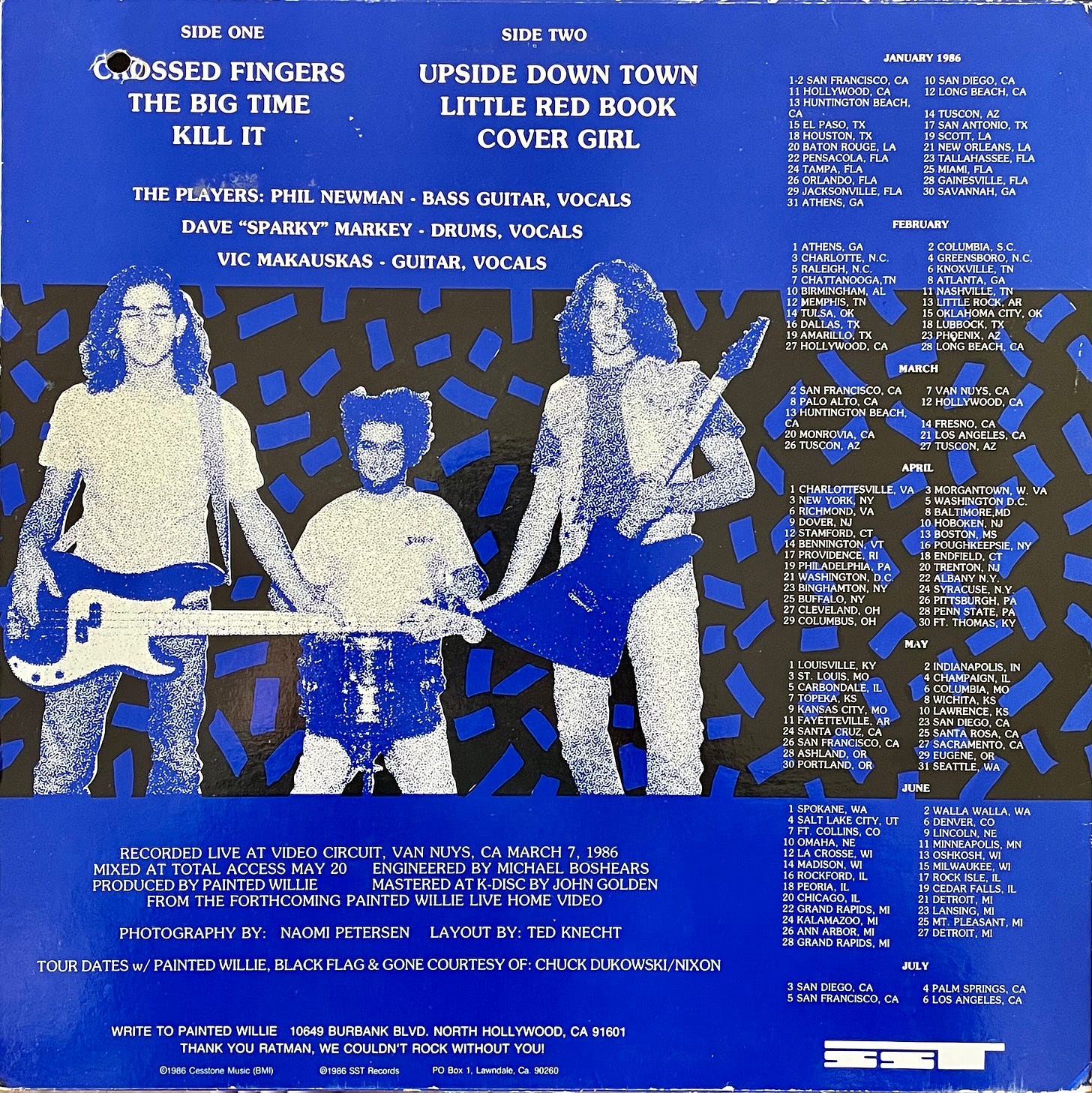Out of the Bunker
Judy Baca and Painted Willie
It seems like I wrote last week’s newsletter yesterday but here we are in the middle of another week. How did that happen? I think the week went by so quickly because I actually did stuff. Last weekend I took a spur-of-the-moment trip up to LA with Nuvia.
We went to the Oddities Flea Market at the Globe Theatre, ate some almost vegan tacos at Sonoratown in DTLA (the tortillas are made with lard; I regret nothing), visited the oldest business in Little Tokyo—Fugetsu-Do—that happens to make the best mochi I’ve ever tasted, and went to the Judy Baca retrospective at the Museum of Latin American Art in Long Beach, which is a must see.
I haven’t been to any indoor concerts and still not comfortable dining at restaurants unless its outdoors or adjacent to a patio. But I’ve found that going to art museums has been a great way to get out of the house and re-enter urban life. It’s been reassuring to see people follow protocols in a place where there’s plenty of room to look, listen, and get inspired. Plus, Judy Baca is a bona fide LA hero.
Of course, it’s easy to be in the bunker if you’ve got a book to finish writing, which I’m happy to report is no longer the case. I turned in the first draft of the Evan Dando manuscript last week and I’m enjoying this brief lag while I wait for feedback. Actually, “enjoying” is an understatement. I am fucking ecstatic. For the first time in two years I haven’t had a deadline to endlessly worry about. I love what I do but I will love doing it even more after this sweet, sweet respite.
Filling my brain up with art feels like the right thing to do right now. Have you been to an art exhibit recently that moved you? If so, please share in the comments. (I went to see the Yolanda López retrospective at MCASD a few weeks ago, which I also recommend, especially for San Diego readers.)
PssSST… (Van Nuys Edition)
Although Hüsker Dü’s departure from SST has often been characterized as a loss for the label, the success of New Day Rising (SST 31) and Flip Your Wig (SST 55), released eight months apart in 1985, were a boon for the label. Those records helped SST expand its roster of artists.
Not surprisingly, many of the initial signings came from SST’s circle of friends in the South Bay. For instance, D.C.3, Overkill, SWA, and Würm all released records in 1985. Some of the new projects were directly associated with the Black Flag touring enterprise. Black Flag had been taking SST artists out on the road for years, but bands like October Faction and Tom Troccoli’s Dog were engineered by SST to serve as opening acts and were made up of members of Black Flag and its road crew as a way to save money.
But that wasn’t the only reason. Greg Ginn, who was in both October Faction and Tom Troccoli’s Dog, loved to play guitar. He believed his performance in Black Flag improved when he had a chance to warm up first. A short set with October Faction or Tom Troccoli’s Dog kept Ginn sharp when it was time to unleash Black Flag.
That’s all well and good, but there wasn’t a natural audience for records by October Faction and Tom Troccoli’s Dog. The music was both improvisational and experimental and stood apart from the rest of the catalog. That’s neither here nor there. I’m not going to judge the quality of those records (yet). But fans tended to lump this new crop of SST releases together as house bands. That, my friends, is a shame because one of SST’s new signings in 1985 is often unfairly included in this group: Painted Willie.
I’m writing today to say: this travesty must end now.
Like the Minutemen, the Meat Puppets, and Hüsker Dü, Painted Willie was a hard rocking trio that consisted of Vic Makauskas on guitar, Phil Newman on bass, and Dave Markey on drums. Before I get into why I love this band, let’s get into the many reasons why Painted Willie is not an SST house band.
First and foremost, Newman and Markey were in a punk band called SIN 34 all the way back in 1981 that was fronted by Julie Lanfeld. SIN 34 played with all the big punk bands of the era, appeared in a bunch of comps, and were featured in fanzines and magazines—none of which had anything to do with SST. SIN 34 had that quintessential LA sound: fast and trashy with a touch of menace.
Markey wasn’t just a musician, he also founded the zine We Got Power with Alan Gilbert, Jennifer Schwartz, her brother Jordan Schwartz, and Kim Pilkington. Based out of Santa Monica, We Got Power covered all the major SoCal bands of the early ‘80s.
But wait there’s more. Markey wasn’t just a musician and a zinester, he was also a filmmaker with a passion for making his own projects. These included a horror movie in 1980, the hardcore punk document The Slog Movie in 1982, and a narrative feature about a band of teenage runaways that rise to fame called Desperate Teenage Lovedolls in 1984.
While Markey was making movies and zines, Newman started his own recording studio in North Hollywood called Spinhead Studios where he learned how to engineer and produce records on the job. It was here that Painted Willie emerged while Newman and Markey were living in the studio.
Bands, zines, films, studios. That’s an impressive list of achievements by any measure and it was all accomplished independent of SST. I don’t want to be completely disingenuous: there were plenty of points of intersection. We Got Power interviewed Black Flag and filmed Henry Rollins’s first show with the band, and Black Flag’s music was included in many of Markey’s films.
The biggest difference between the We Got Power crew and the SST crew is the way that their many projects featured collaborations with women. Woman were both at the front and behind the scenes in all of Markey’s projects. SIN 34 was one of the first female fronted hardcore bands. Jennifer Schwartz and Kim Pilkington had a hand in all aspects of We Got Power’s creation and production, and both played starring roles, alongside several other dynamic women, in Markey’s movies, namely Desperate Teenage Lovedolls and its sequel Lovedolls Superstar.
SST’s entire vibe was decidedly masculine with limited collaborations with woman.
That’s a lot of throat clearing for a discussion about a six-song EP. Painted Wille’s Live from Van Nuys (SST 085) its follow up to the full-length LP Mind Bowling (SST 057) both released in 1986.
I think Mind Bowling is the far superior release, and I’ll do a deep dive into that record down the road, but what makes Live from Van Nuys so fascinating is the circumstances surrounding it.
Live from Van Nuys was recorded during a short break from Black Flag’s final tour: the In My Head Tour with Gone and Painted Willie. Everyone knows how grueling those Black Flag tours were. The hardships preserved in Rollins’s tour diary, Get in the Van, is one of the reasons why Black Flag is as respected as it is today. But it will never cease to amaze me all the things that Ginn and his crew got done during the short breaks during this tour, which included making a second Gone album and recording Live from Van Nuys.
Of the six songs on the EP, just one appears on Mind Bowling: the cover of “Little Red Book” that the LA band Love popularized in the ’60s. After months on the road, Painted Willie had the songs down cold so there isn’t a clunker in the bunch, but for me, “Little Red Book” is the standout track on the EP. It just sounds like they’re having fun, which isn’t a feeling one usually associates with the ’86 tour.
The EP is in 12” format and the covers feature photography by Naomi Petersen. (My copy didn’t come with any inserts.) The back cover includes an interesting element: the entire itinerary for the In My Head Tour. The album was recorded March 7, 1986. Rollins didn’t write about that day in Get in the Van, but according to the itinerary, Black Flag was scheduled to play Palo Alto the following day. Record an album one day, drive 500 miles and play a gig the next. All in a day’s work for the hardest working band in punk rock.
The end of the itinerary is also interesting. Everyone knows Henry Rollins played his last gig with Black Flag on June 27 in Detroit. According to the itinerary, Black Flag was scheduled to play another show in Grand Rapids, and then four more the following month in San Diego, Palm Springs, San Francisco, and Los Angeles. Those shows never happened. I love speculating in counterfactual outcomes and I can’t help but wonder if a final swing through the cities where Black Flag was beloved might have resulted in a different ending for the band.
But probably not.
According to Markey, the In My Head Tour was a way to wrap up one project while launching another. Gone didn’t quite pan out the way Ginn hoped, which allowed him to focus on SST, which resulted in a period of unprecedented expansion and growth for the label.
Markey documented the In My Head Tour in his film Reality 86’d. You can watch the film in its entirety (who knows how long it will be up before it gets taken down again), but be careful, the experience just might make you a Painted Willie fan…




